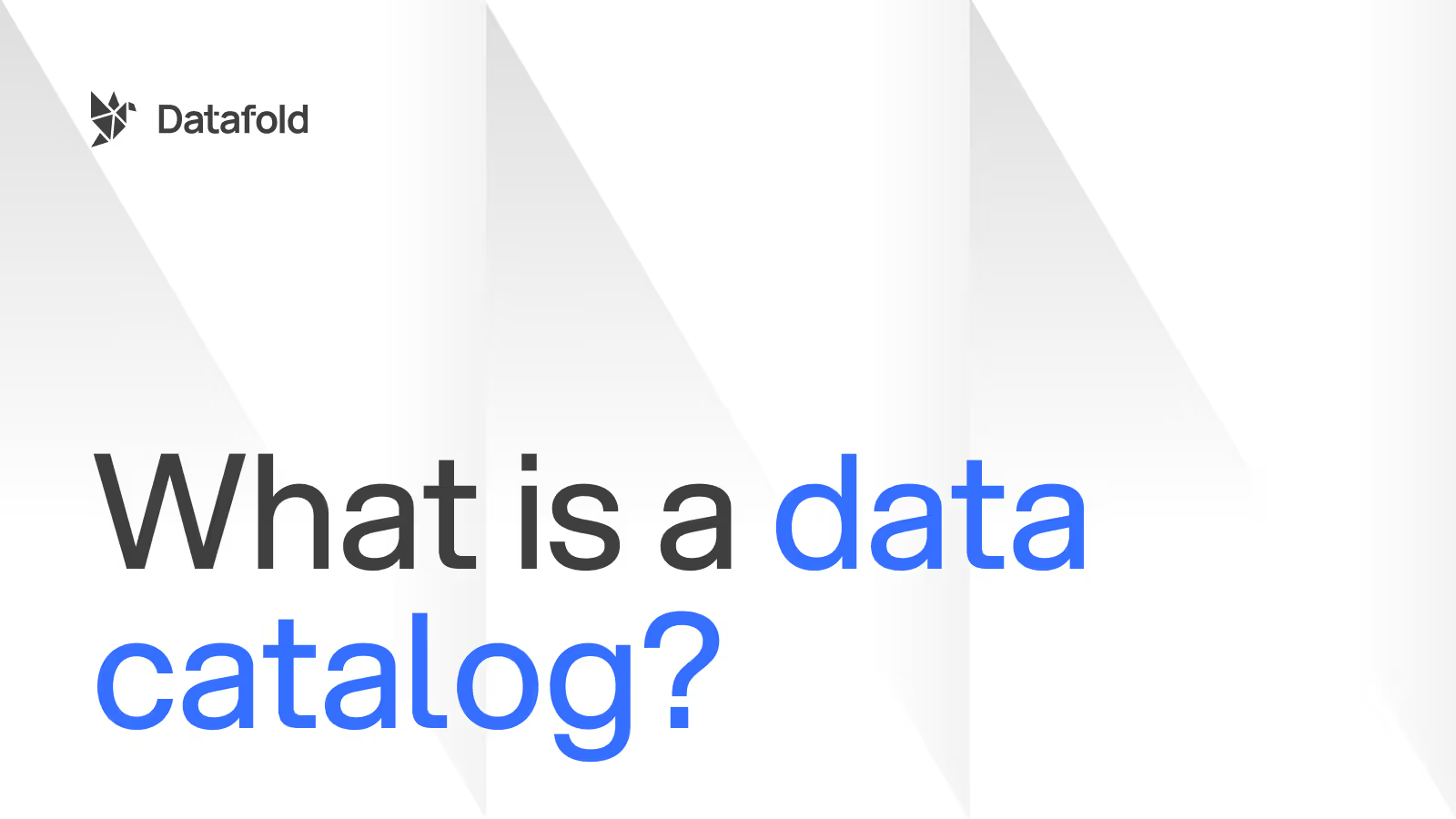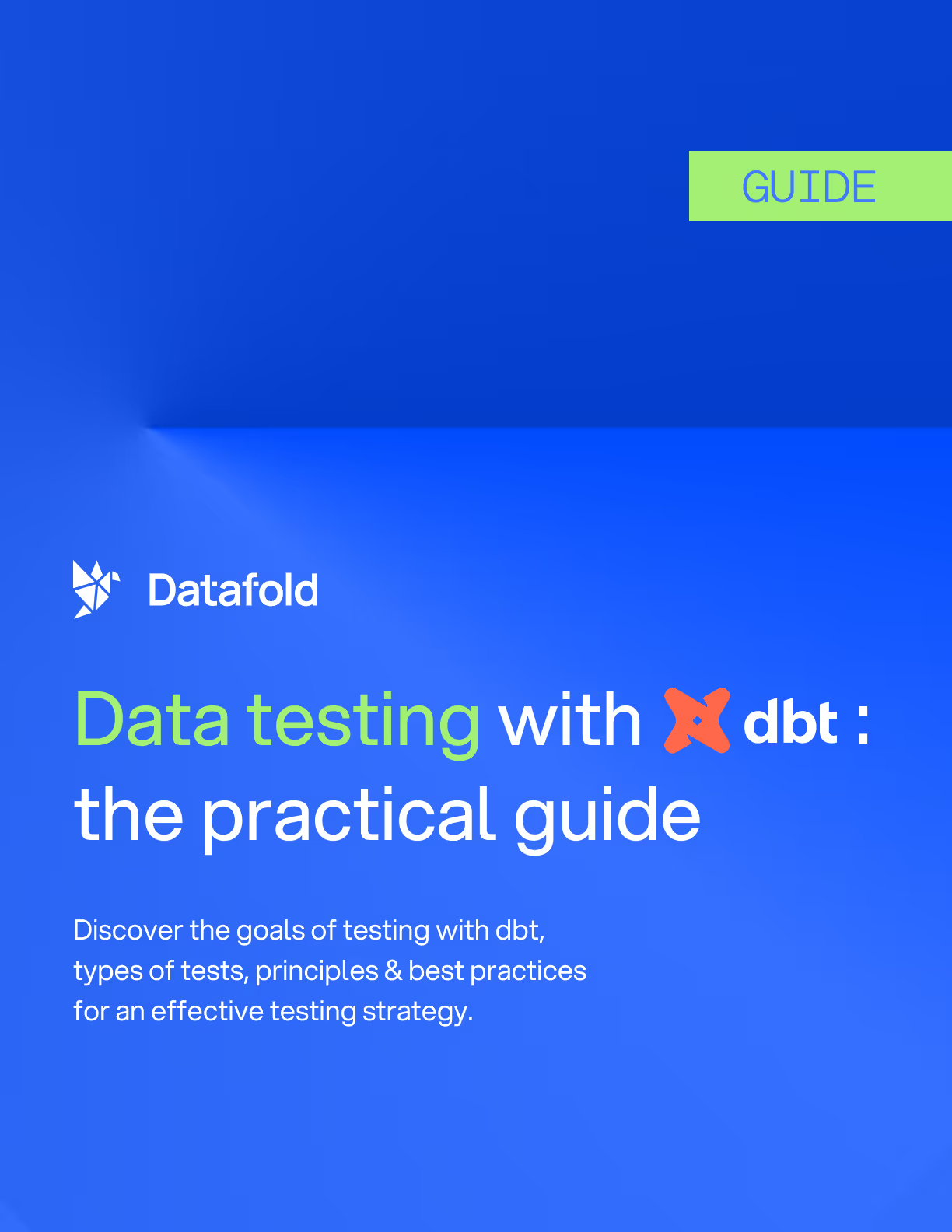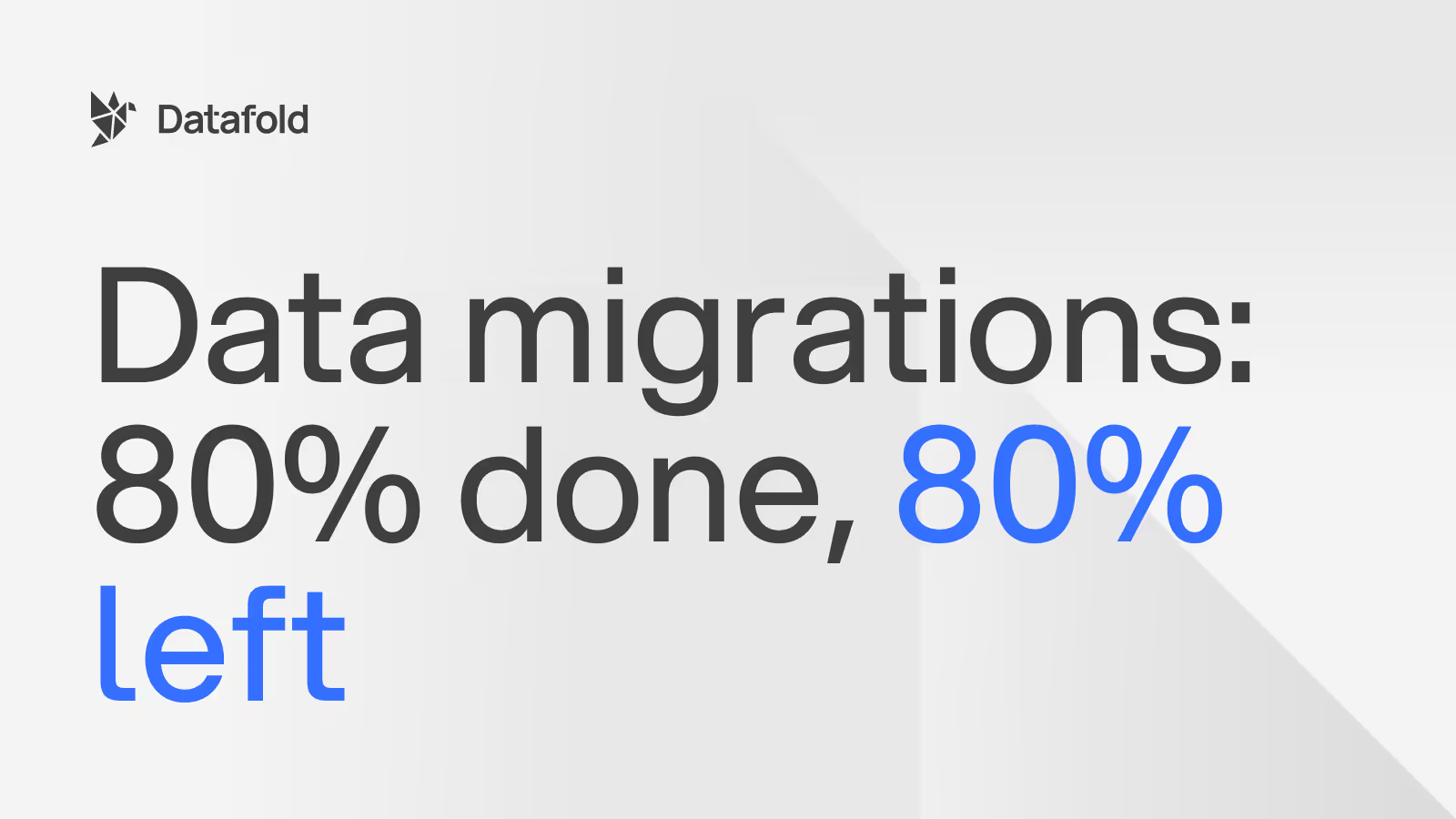What is a data catalog?
Discover the role of metadata in data catalogs, how they organize and enhance data accessibility, and why they're essential for effective data management.

Sometimes navigating a data ecosystem can feel like entering a maze. You know you have that data somewhere, but remembering how to actual find it...that's a whole other issue.
The more data-rich your company is, the harder it can be to find what you’re looking for. Maybe the data you need is stuck in an organizational silo or maybe it’s in an S3 bucket that’s just one access request away. Either way, data does you no good if you don’t know where it is or whether you have access to it.
And this, dear reader, is why data catalogs exist.
By organizing all your data resources, a data catalog ensures that you can quickly find and use the data you need. Everyone compares it to a library because, well, that’s what it’s like. But a good data catalog tells you more than “this data is in that system.” There’s tons of data catalog metadata to look at as well.
A data catalog shows you what each data set contains, who is responsible for it, and how you can access it. And best of all, it simplifies the once-cumbersome process of finding data, letting you and your colleagues focus more on analysis and less on the search.
Core concepts of data catalogs
Conceptually, data catalogs are simple: they provide a comprehensive inventory of data and metadata, increasing data consumers’ ability to search and discover. They’re helpful for both data producers and consumers, providing a framework for organizing and democratizing data. But they actually have many more useful features that enhance your data quality and reliability:
- Metadata management: By automatically capturing metadata—such as data origin, format, and lineage—data catalogs offer an in-depth view of data assets, helping users understand and trust their data sources.
- Data profiling: Some data catalog software provide statistics and summaries about datasets, like value distributions and frequency, which can identify data quality issues and ensure that the data conforms to established standards.
- Data governance integration: Newer, fully-featured data catalogs integrate with data governance tools to enforce policies on data access, usage, and security to maintain data integrity and compliance with regulations like GDPR or HIPAA.
- Version control: Similar to software version control, this feature tracks changes to datasets and data catalog metadata, allowing for rollback and historical analysis, which are essential for maintaining data accuracy over time.
- Collaboration tools: Features such as user annotations, tagging, and discussion forums within the catalog facilitate collaboration among team members, making it easier to understand and use the data.
- Automated data discovery and classification: Advanced data catalog tools use machine learning to automatically discover, tag, and classify data catalog entries, which reduces human error and makes data management more efficient.
Beyond the basic searchability capabilities, data catalogs are an important tool for managing the eight dimensions of data quality. Modern data catalog solutions facilitate important security and governance for an entire organization. Depending on the organization, it can be completely open or highly locked down with auditable access tracking for compliance needs.

Data catalogs really love metadata
The foundation of a highly-functional data catalog is the underlying metadata. Catalogs are all about metadata consumption and management. It would be impossible for any catalog to actually index and understand all the data it tracks, so it would make sense to leverage metadata as much as possible.
Here are the different types of metadata you’ll find in a catalog:
- Technical metadata: Describes the technical aspects of data catalog entries that aid in data management and usage like data types, structures, and formats.
- Business metadata: Provides context around data for business users, including definitions, relationships to business processes, data ownership, and entries in the business glossary.
- Operational metadata: Tracks data usage and operations, such as data lineage, update history, and processing details, to ensure data integrity and reliability.
- Usage metadata: Records who accesses data and how they use it, helping analyze data popularity, user behavior, and guiding data governance policies.
- Security metadata: Information on data access controls and security policies that protects sensitive data and ensures compliance requirements are met. This information includes details on encryption, data masking, and user access levels, playing a critical role in data governance and privacy.
AI and modern data catalogs
It wouldn’t be 2024 if we didn't talk about generative AI, but we promise not to do so frivolously. AI and ML are actually really useful for data catalogs.
Modern data catalogs use AI and ML to automate metadata generation. This automation speeds up the data cataloging process and improves accuracy by extracting and classifying data from various data sources. After an AI tool evaluates a data set, data analysts can use the catalog to analyze data consumers’ usage patterns to recommend relevant datasets based on their needs and previous searches.
AI and ML can even play into data governance by enforcing compliance with data privacy and security policies, in case someone anomalously accesses data they shouldn’t.
Data catalogs use generative AI to understand data lineage and impact analysis, and can help provide detailed insights into data relationships, origins, transformations, and dependencies.
Why data catalogs are essential for data-rich companies
Knowing what data you have and being able to find it easily is imperative because data volumes are exploding, making it challenging to harness without easy access. Enterprise data catalogs are like the Google search for your company's data. Just like how you use keywords to find information on the internet, data catalogs help your teams quickly locate the datasets they need without the hassle of sifting through endless digital piles.
Enhancing data discoverability and usability
In a business context, a data catalog tool enhances overall organizational efficiency, making them an indispensable tool for any data-driven enterprise. Here’s how:
- Search and discovery: Instead of wasting hours or even days manually digging through the available data, data users can leverage the power of keywords to swiftly find the most relevant datasets for their projects. This process not only speeds up research and development but also significantly cuts down on frustration and increases productivity.
- Collaboration: Working on a group project without a centralized repository for sharing files is chaotic. Data catalogs can help mitigate that chaos. They make it easy for departments across your company to share insights about datasets and metrics, fostering a collaborative environment that's primed for innovation.
- Compliance and security: With great data comes great responsibility. Data catalogs ensure that only authorized personnel have access to sensitive information, reducing the risk of data breaches.
Given these features, data catalogs are transforming the way businesses manage and use their data to maintain a competitive advantage.
Ensuring data governance and compliance
Navigating the complex waters of data governance and compliance can be daunting, but data catalogs are the lighthouse guiding ships safely to shore. These essential tools and features ensure your company's data handling practices are not only efficient but also fully compliant with legal standards:
- Access control: Data catalogs manage user permissions meticulously. They ensure that only authorized personnel can access sensitive data, a must-have feature for meeting GDPR requirements and other regulatory frameworks.
- Data masking: Data masking anonymizes sensitive information. This process allows you to use data for analysis without revealing personal details, aligning with privacy laws and protecting individual privacy.
- Audit trails: Keeping a log of who accessed what data and when is not just about oversight; it’s a compliance necessity. Data catalogs maintain detailed audit trails, making it easier for companies to undergo compliance audits and meet reporting obligations under laws like HIPAA.
- Impact analysis: Data catalogs help organizations assess how alterations in data handling could impact compliance with privacy regulations, ensuring that no modifications lead to unintended legal breaches.
- Data lineage: Knowing where your data came from and how it was processed gives you a detailed map of its journey. Data catalogs provide this transparency by tracing data origins and transformations, supporting compliance with regulations that demand clear insights into data sources and processing activities.
Data catalogs do more than organize your data—they fortify your data governance strategies and simplify compliance, making them an invaluable asset for any organization navigating the regulatory seas.
Data catalog benefits: A closer look
Data catalogs help organizations manage their extensive data collections efficiently. They provide a centralized platform that simplifies the storage and organization of metadata. This capability allows data catalog users to quickly locate data assets essential for timely and accurate decision-making purposes. However, a quick review of data catalog use cases reveals additional benefits.
Increasing operational efficiency
Data catalogs streamline various data management processes, which in turn boosts operational efficiency. By providing comprehensive search functionalities and data lineage features, data catalogs reduce the time employees spend searching for data. This greater efficiency allows data professionals to spend more time on analyzing data rather than managing it.
Real-world example: A financial services firm used a data catalog to understand how their core metrics and datasets are built and have changed over time. Be keeping metric definitions and metadata around their core tables in their warehouse, their analytics team can more easily model and pull data for the firm.
Fostering a culture of data literacy
Data literacy is increasingly recognized as an essential skill because it empowers employees to make better decisions by understanding, analyzing, and communicating data effectively. Data catalogs play a key role here. They facilitate a better understanding of data by providing clear documentation, user-friendly interfaces, and educational resources about data usage and best practices. This understanding fosters a culture where all employees are encouraged to make data-driven decisions.
Real-world example: An IT company introduced a data catalog to help non-technical staff understand data through simplified metadata and visualization tools. Workshops and regular training sessions were held to improve data literacy. As a result, employees across departments began to use data more effectively, enhancing cross-functional collaborations and innovation.
It’s hard to overlook the many benefits a data catalog offers. From enhancing data quality, increasing operational efficiency, and fostering a culture of data literacy, businesses that embrace these tools gain a competitive edge in their respective industries. Moving forward, data catalogs will become even more integral as organizations seek efficient ways to harness the power of their data.
Why every data-driven enterprise needs a data catalog
Locating the right data can be challenging, especially when it's scattered across various organizational silos or cloud storage. Data catalogs address this issue by efficiently organizing all your data resources, making it easy to find and use the data you need. More than just a storage system, data catalogs provide rich metadata that deepens understanding and enhances usability.
Data quality and compliance with standards like GDPR or HIPAA are maintained through data catalog features such as metadata management, data profiling, and version control. They’re essential for ensuring accurate and compliant data handling within organizations. They also streamline data discovery and improve collaboration, transforming potential data chaos into a well-organized asset that drives business value.
Getting started
Ready to enhance your strategic data capabilities? There are a few ways to start:
- Sign up for a 14 day free trial of Datafold to explore how data diffing can improve your data quality practices within, and beyond, data teams
- Book time with one of our solutions engineers to learn more about Datafold and how it will integrate with your tech stack

.avif)



